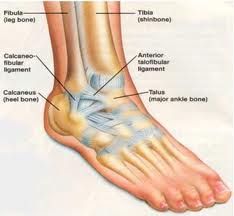
Sprains and strains are used interchangeably to describe everything from a twisted ankle to a pulled hamstring, but they are two specific injuries.
Wrist and thumb sprains are also common, particularly in sports like skiing, where it’s not unusual to fall and land on an outstretched palm. Strains happen when a person twists or pulls a muscle or a tendon. Athletes in contact sports, like football, hockey, and boxing, are at particularly high risk for strains. Frequent repetitive motions, like those used in tennis, rowing, and golf, can lead to strains of the hand and forearm. In the workplace, people at particular risk for sprains and strains are those who engage in frequent heavy lifting, which can include everyone from construction workers and laborers to warehouse workers, nurses, and physical therapists. How Can You Detect a Sprain or Strain?The signs of most sprains or strains are very similar: pain and inflammation, and sometimes bruising, at the injured area. Depending on the severity of the sprain or strain, the pain may be mild, moderate, or severe. The more severe the sprain or strain, the more difficult it is to use the affected area. Someone with a mild ankle sprain may just favor that ankle slightly, while a more severe ankle sprain may cause much more pain and make it difficult or impossible to walk.
Sprains are graded on a scale of I to III:
Aidan Raftery
Sports Therapist
- A sprain is a stretch or tear in a ligament (the bands of fibrous tissue that connect our bones at the joints).
- A strain is also a stretch or tear, this time affecting the muscle itself or a tendon (the tissue that connect the muscles to the bones).
Wrist and thumb sprains are also common, particularly in sports like skiing, where it’s not unusual to fall and land on an outstretched palm. Strains happen when a person twists or pulls a muscle or a tendon. Athletes in contact sports, like football, hockey, and boxing, are at particularly high risk for strains. Frequent repetitive motions, like those used in tennis, rowing, and golf, can lead to strains of the hand and forearm. In the workplace, people at particular risk for sprains and strains are those who engage in frequent heavy lifting, which can include everyone from construction workers and laborers to warehouse workers, nurses, and physical therapists. How Can You Detect a Sprain or Strain?The signs of most sprains or strains are very similar: pain and inflammation, and sometimes bruising, at the injured area. Depending on the severity of the sprain or strain, the pain may be mild, moderate, or severe. The more severe the sprain or strain, the more difficult it is to use the affected area. Someone with a mild ankle sprain may just favor that ankle slightly, while a more severe ankle sprain may cause much more pain and make it difficult or impossible to walk.
Sprains are graded on a scale of I to III:
- Grade I is stretching of the ligament or a very mild tear, with little to no instability at the joint.
- Grade II is a more serious but still incomplete tear.
- Grade III is a completely torn or ruptured ligament. This is not a broken bone, but can feel like one since it is often impossible to put weight on the joint or use the affected limb.
Aidan Raftery
Sports Therapist
 RSS Feed
RSS Feed
